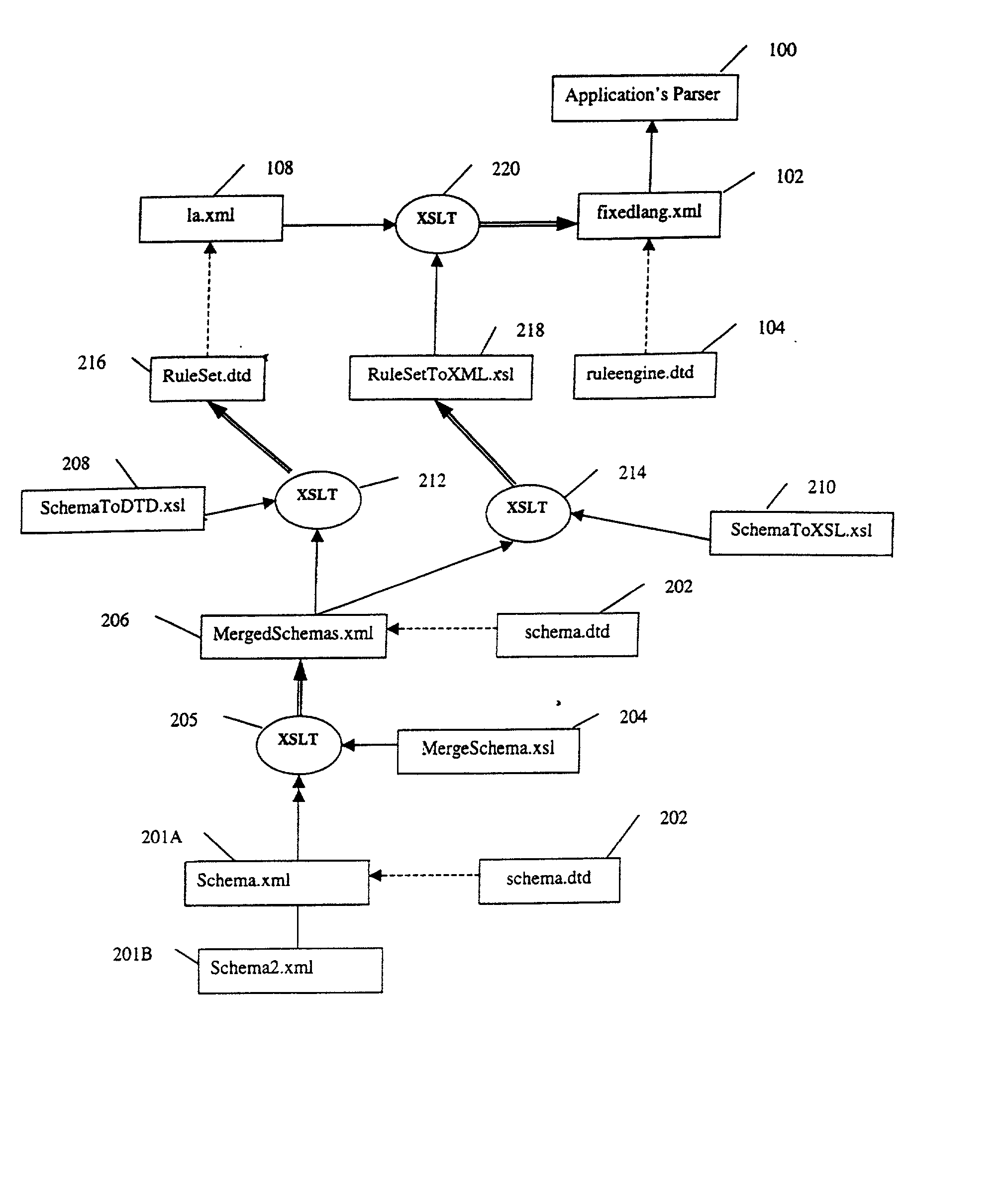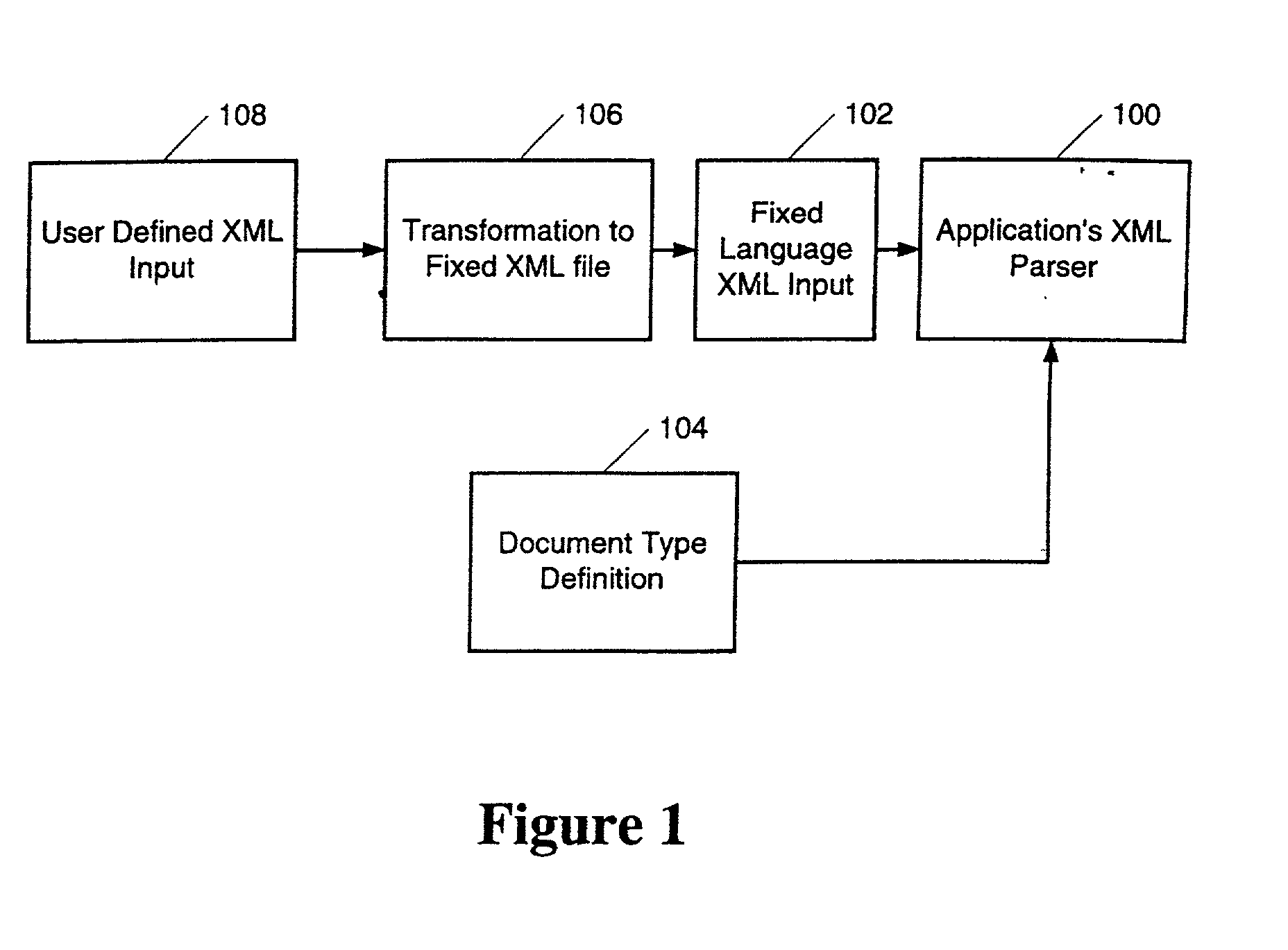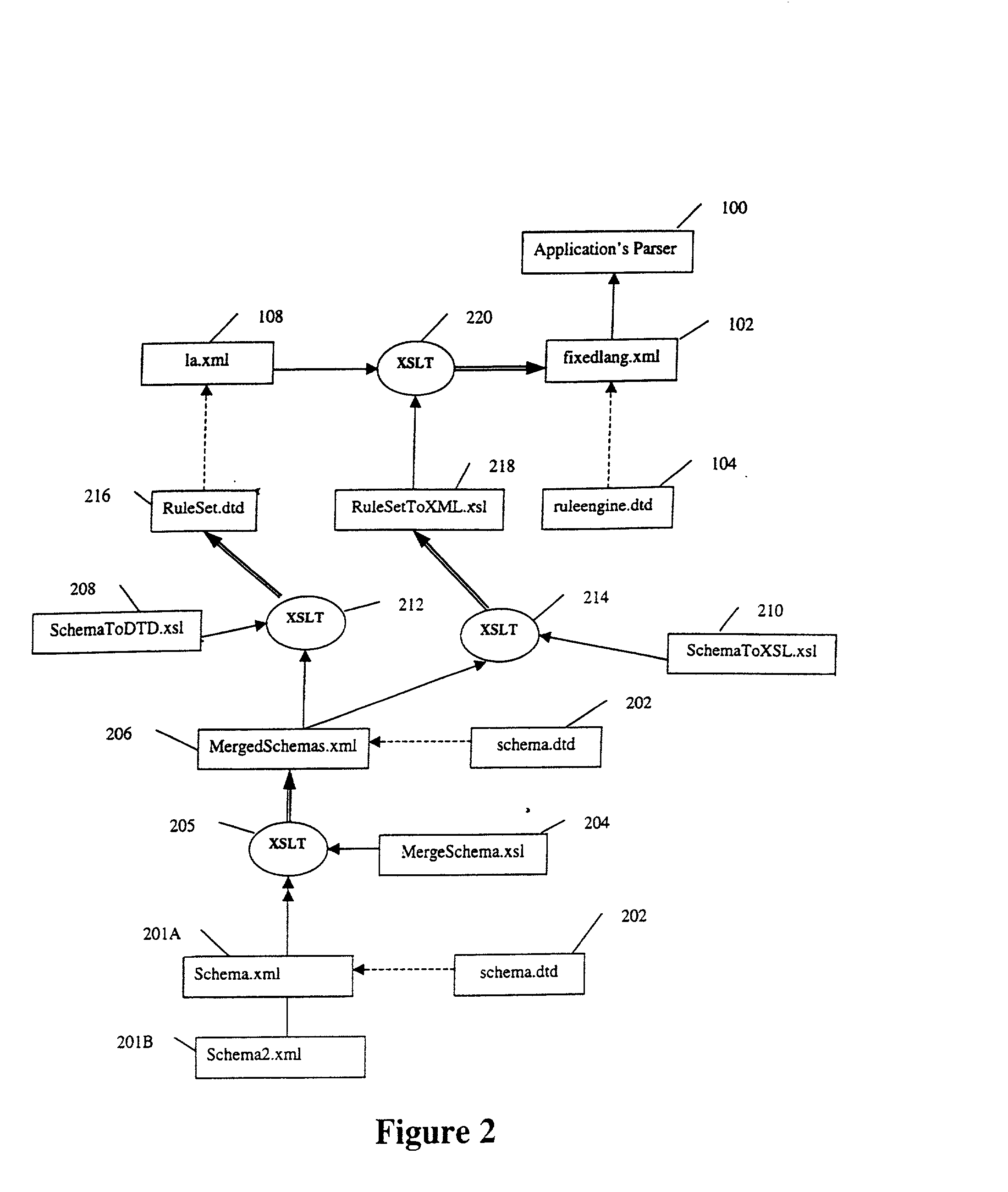[0020] An embodiment of the invention provides users with a simplified and extensible mechanism for creating structured input files such as XML files. A
computer program's XML parser typically requires that the user make a verbose XML file with redundant statements. In cases where the user is
interfacing with a simplified
Document Type Definition (herein after DTD), the XML files that are typically created can be overwhelmingly complex. This is particularly the case when the user is not intimately familiar with the specifics of XML. In such instances, the verbose XML file is usually prone to errors if created by a novice user or an entity not involved in the initial creation of the application and parser. Thus, an embodiment of the invention simplifies the initial input provided by the user. This enables novice users and other users who are unfamiliar with the initial specifics of the program to create an input XML file conforming to the simple DTD thus improving the
usability of a structured input file. This is accomplished in one embodiment of the invention by using a grammar rich XML file (simplified XML file) provided by the user.
[0022] In an embodiment of the present invention, the user or an agent of the user defines a schema for the desired grammar level, and then through a series of
XSL transformations, the complex DTD file is created. Also, a stylesheet used for transforming the user's grammar rich XML file is automatically created. The grammar rich XML file provided by the user conforms to the automatically created complex DTD file. Thus, the grammar used in defining the
user interface to an application is extensible without any requirement to enrich and recompile the application's XML parser.
[0026] Embodiments of the invention provide users with a simplified yet extensible mechanism for providing input data to a
computer program. For example, embodiments of the invention enable users to interface with an application in a way that reduces the complexity of providing data to application's document parser while allowing
extensibility of the grammar available to the document authors without necessitating the recompilation of a parser application. An extensible grammar provides a rich language from which the document authors can organize data. An extensible grammar also provides authors the capability to create new elements and attributes as desired. In the following description, numerous specific details are set forth in order to provide a more thorough understanding of the invention. It will be apparent, however, to one skilled in the art, that the invention may be practiced without these specific details. In other instances, well-known features have not been described in detail in order to avoid unnecessarily obscuring the invention.
[0029] An embodiment of the invention achieves the same result (i.e., ultimate XML file) by either combining a simple DTD with a very complex and verbose XML file, or a complex and verbose DTD with a simple XML file. An embodiment of the present invention implements the latter because the question being addressed is
user interface (i.e., ease of use). A novice user of the application could more easily write a simple, but grammar rich (i.e., one that uses fewer words to describe the same tasks) XML input file. However, more
knowledge base (i.e., of the applications input requirements and XML
syntax) is required when the requirement is for a complex and verbose XML file with appropriate calls to the proper
java objects. An XML input file written by one not intimately familiar with the grammar of an application's parser and interfaces may be prone to fatal errors. Therefore, an embodiment of the present invention provides the user the capability to define the inputs to the application using a grammar rich (i.e., simple and understandable) XML file while an appropriate DTD file (i.e., complex and verbose DTD file) is automatically created that is in conformance with the user's XML file.
[0058] FIG. 1 is an illustration of the transformation process, in accordance with an embodiment of the present invention. The application's XML parser 100 expects input 102 to have a fixed format conforming to simple DTD 104. Parser 100 understands a fixed grammar and thus would complain about a fatal error and may stop
processing when XML input (i.e, fixed language) 102 fails to comply with that fixed grammar. Thus regardless of the grammar used in
user input 108, XML input 102 must comply with the grammar understood by parser 100. Therefore, an embodiment of the present invention translates
user input XML 108 using transformation processes defined at block 106 to generate fixed language XML input 102. The grammar in XML input file 108 is not constrained by application's parser 100, thus it is extensible. This means that a user organization is free to define its preferred format and language for
user input XML file 108.
[0063] The grammar rich XML file (e.g., la.
xml 108), typically defined by the business user, conforms to the generated complex DTD (e.g., Ruleset.dtd 216) because it is based on the
user defined schema. Finally, the transformation engine
XSLT 220 transforms the user input XML file having rich grammar (e.g., la.
xml 108) using the automatically generated stylesheet (e.g., RuleSetToXML.
xsl 218) to generate the fixed language XML file (e.g., fixedlang.
xml 102) which conforms to
document type definition (e.g., ruleengine.dtd 104) understood by the application's parser 100. Thus, the generated fixed language XML file (e.g., fixedlang.xml 102) is understood by the application's parser 100 and should not result in fatal errors during
processing.
 Login to View More
Login to View More  Login to View More
Login to View More 


